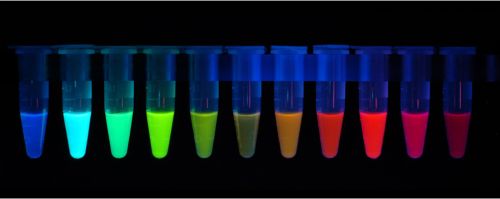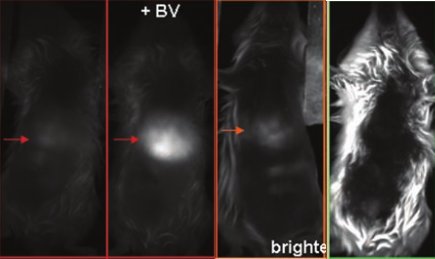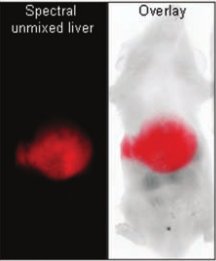An Infrared revolution
 Some weeks ago, Science published a paper that may start a revolution in Medical and Biological Sciences and, possibly, the way some diseases are diagnosed. Before giving any detail about this paper, I will take a small detour.
Some weeks ago, Science published a paper that may start a revolution in Medical and Biological Sciences and, possibly, the way some diseases are diagnosed. Before giving any detail about this paper, I will take a small detour.
In 2004, I had the opportunity to watch Roger Tsien talk in an imaging course. Following the informal environment of the course, Tsien showed some of his last creations in the world of fluorescent markers. It was when I concluded that someday he would get a Nobel Prize, which happened last year.

Tsien’s Nobel Prize was given by his use and abuse of the GFP, green fluorescent protein. As the name says, the GFP glows at the green wavelength (509 nm) after absorbing light in a certain wavelength (488 nm). If we make a tissue express GFP, we can monitor it using a fluorescence microscope. The same works if we attached a protein to GFP. Part of the academic life of Riger Tsien was dedicated to engineer better GFPs and other fluorescent proteins in order to generate a diverse colour palette, all used to understand the complex works of the cells.
One of the things that impressed me most in Roger Tsien’s seminar was his idea to develop fluorescent reporters in the infrared range. The key idea is: all fluorescent reporters work in the ultraviolet and visible range of the electromagnetic spectrum. However, these wavelengths are usually absorbed in living tissues, which does not happen with infrared wavelengths. This means that a infrared fluorescent reporter may be used to monitor whole organisms instead of using thin layers of cells.
Five years separate us from that seminar and some weeks ago Science magazine published a paper of the result of Rogen Tsien’s work: the IFPs (infrared fluorescent proteins). GFPs and the other fluorescent proteins were taken from jellyfish and corals whereas IFPs were modified from bacterial phytochromes. These proteins require and extra molecule to become fluorescent: biliverdin.
The IFPs are excited at 686 nm and emit at 713 nm, far from the strong absorptions of hemoglobin (everything bellow 650 nm) and water (everything above 900 nm). Ate the 650 nm to 900 nm, our body is basically transparent, which allowed Roger Tsien’s team to image the liver of a live mice expressing IFPs. In order to make the liver express IFP, they used a virus that only targets the liver to deliver the IFP genes. The biliverdin was delivered through injections. The final result is amazing: in the first image bellow, we can see the IFS without biliverdin. In the next, we may see the IFS with the biliverdin. In the third image, there is mKate, the best protein for this application before the OFS. In the last image we have the GFP, which is not detected. All that using an intact mice!

Using some techniques to treat the images, it is even possible to get clearer images of a liver expressing IFP! And this is only the first generation: by using evolutionary methods that create random mutations in the IFP, it will be possible to generate brighter proteins.

It is even possible to create equipments to generate high-definition images, which will make possible to make new and more accurate diagnostic equipments for Medical application. You can even picture the use of IFP to make tumors fluorescent and see how it is growing or to check if the newly introduced stem cells are growing well in the damaged spinal cord. All these scenarios are possible with IFP!
5 years ago I predicted that Roger Tsien would win a Nobel prize, has he just opened the possibility for a second prize?
Shu, X., Royant, A., Lin, M., Aguilera, T., Lev-Ram, V., Steinbach, P., & Tsien, R. (2009). Mammalian Expression of Infrared Fluorescent Proteins Engineered from a Bacterial Phytochrome Science, 324 (5928), 804-807 DOI: 10.1126/science.1168683
============================================
This is a translated version of this post, written originally in Portuguese by Carlos Hotta at Brontossauros em meu Jardim







Discussão - 2 comentários
“It is even possible to create equipments to generate high-definition images, which will make possible to make new and more accurate diagnostic equipments for Medical application.”
Amazing!!! No X-rays, no iodinated radiocontrasts, no gadolinium.
roger tsien should win nobel prize again for calcium indicator